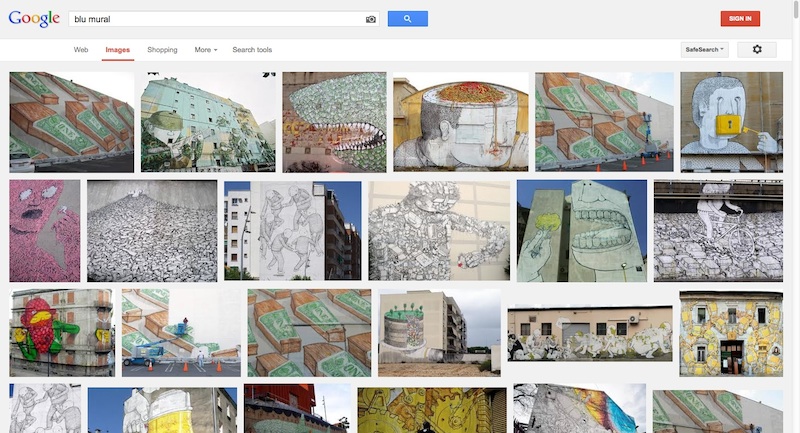Street art can be buffed or dismantled in an instant, but if it’s been photographed, it never really goes away. Some street artists, most notably Blu and the Russian collective Voina, have made artwork that ended up causing such controversy that it was quickly painted over, but not before photos were taken. Even when the physical art is covered with a new layer of paint or it gets power-washed away, the work lived on in photographs. While some people might say, “You should have just painted something less offensive. You could still have made most of whatever point you were trying to make without upsetting people so much that now your work is gone and nobody will see it,” a buffed piece with good documentation can actually get a lot more attention than a less politically charged piece that stays up. Voina’s painting Dick Captured by the KGB was never going to last long. The piece was done illegal and was a very clear “Fuck you!” to the Russian government. The collective painted the shape of a giant penis on a drawbridge so that, when the drawbridge rose, the dick faced directly towards the former headquarters of the KGB. But the group captured the entire action on video and got plenty of photographs as well. Dick Captured by the KGB thrust Voina into the international spotlight. 20 years ago, a similar action might not have gotten the same attention, but now it hardly matters that the piece was removed or how quickly since Voina had documentation and a way to distribute their video and photographs around the world quickly and cheaply.
Although it’s not the only mural of his to be painted over for controversial content, the removal of Blu’s piece at the Museum of Contemporary Art in Los Angeles brought about the most criticism and got the most press. As a result, the piece eventually became one of his best-known works, probably only second to his film Muto. So what happened at MOCA? In late 2010, Blu went to Los Angeles to paint a mural on the outside of The Geffen Contemporary, the site of MOCA’s Art in the Streets show which was due to open in 2011. While Blu was painting, museum director Jeffrey Deitch was in Miami for Art Basel Miami Beach and the events surrounding that. When Blu was nearly finished with his mural, Deitch ordered it painted over. Blu had painted rows and rows of massive coffins draped in $1 bills. The work was quickly buffed, but not before photographs were taken. The removal of Blu’s mural caused a national controversy and accusations of censorship, with the removal being almost universally criticized as a poor decision. One protest of the buffing even included projecting a photograph of the mural back onto the wall where it was originally painted, and a protestor at that event acknowledged that the removal of Blu’s mural had likely boosted its popularity. Tensions were still high months later when the wall was eventually repainted just before the opening of Art in the Streets, and it took more than half a dozen artists working together on a mural at that spot to diffuse responsibility. Lee Quiñones, leading the group on the new mural, even admitted “for me to do it alone might have been a diss to Blu,” and that getting a large group together to paint the mural was his way of avoid that issue.

Even in 2013, years after Blu’s work was buffed at MOCA, Casey Caplowe‘s images of that mural are some of the top Google results for the search “blu mural”. Screenshot of a Google Images search conducted on September 15th, 2013.
Nearly three years after the mural was buffed, 5 of the first 20 images in a Google image search for “Blu mural” are of the MOCA mural, and the image is etched into the minds of street art fans around the world. Okay, so Blu did not finish his mural at MOCA, but it seems that more people saw it and were really invested in it because it was photographed and removed than would have ever cared about it if it had just stayed up. If MOCA had not destroyed it, the piece probably would have just been another mural by Blu to be enjoyed, maybe thought about, and then probably forgotten. This is not to say that Deitch was right or wrong to remove the mural, just that removing it ended up drawing more attention to the piece.
By pushing beyond acceptable boundaries (intentionally or not) but making sure to document their work, street artists may actually get more attention for it and bring about more important discussions than if they make less controversial and longer-lasting pieces.